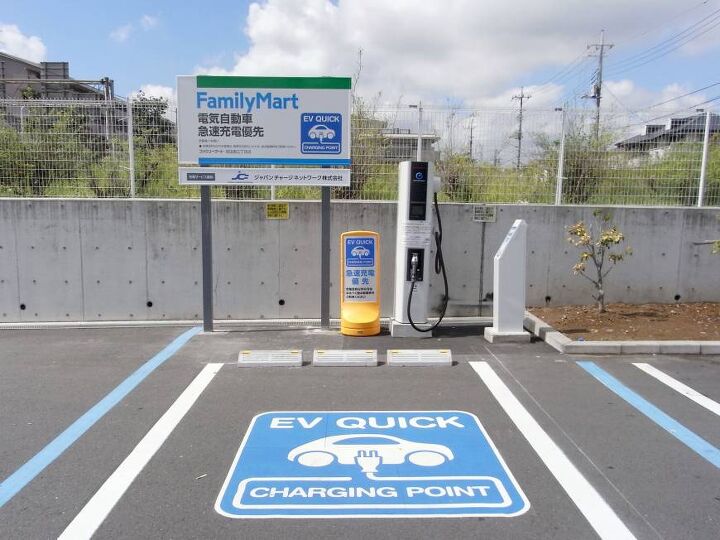Nissan: EV Charging Infrastructure Surpasses Fuel Stations In Japan
Driving around Japan in your EV of choice? Range anxiety likely won’t be an issue, as the nation has more charging points than gas stations.
Per The Japan Times, Nissan discovered the number of such points — including fast and home chargers — now total 40,000. In contrast, there are only 34,000 fuel stations for those in who prefer Rocket Bunnys and Rauh-Welts over Leafs and i3s. The differing figures show how quickly those points have sprung up, especially when it took decades for the oil industry to work its magic in Japan.
However, many of the 40,000 points are in the home, and therefore, not currently accessible to the motoring public. A possible remedy could come in the form of the emerging sharing economy — Airbnb, Car2Go, Uber et al — where homeowners would share their charging point with others for a small fee.
Seattle-based writer, blogger, and photographer for many a publication. Born in Louisville. Raised in Kansas. Where I lay my head is home.
More by Cameron Aubernon


































Comments
Join the conversation
Why are they labelled in english?
What a misleading headline. You are comparing gas stations, which are publicly available, to all possible electric vehicle charging stations, including those at people's homes. One gas station serves hundreds if not thousands of vehicles each day, whereas a home EV charging station serves one (or occasionally two) vehicles owned by the family of concern. After all, one can assume that each owner of an EV has bought one home charging station. A fairer comparison would be to compare the number of gasoline tanks, those installed at gas stations (34,000 x 2 or so) PLUS those installed in vehicles (one per), to the number of EV chargers. And you have used data provided by a leading manufacturer of EVs, who wants to promote the idea that their technology is viable for the general public. Did you even look into the number of publicly available charging stations (which is the fair comparison), or did you just copy and paste from the Nissan press release?
Correct this isn't an apples to apples comparison and can be legitimately faulted for that. So why did they do this other than as a stunt? It does draw attention to the fact that there are a multitude of potential locations to plug your car in which far outnumber the number of gas stations or gas pumps. So a true apple to apples comparison isn't feasible or even desirable.
Range anxiety is a red herring. Get a plug in hybrid like Volt or C-Max Energi if you need more range.